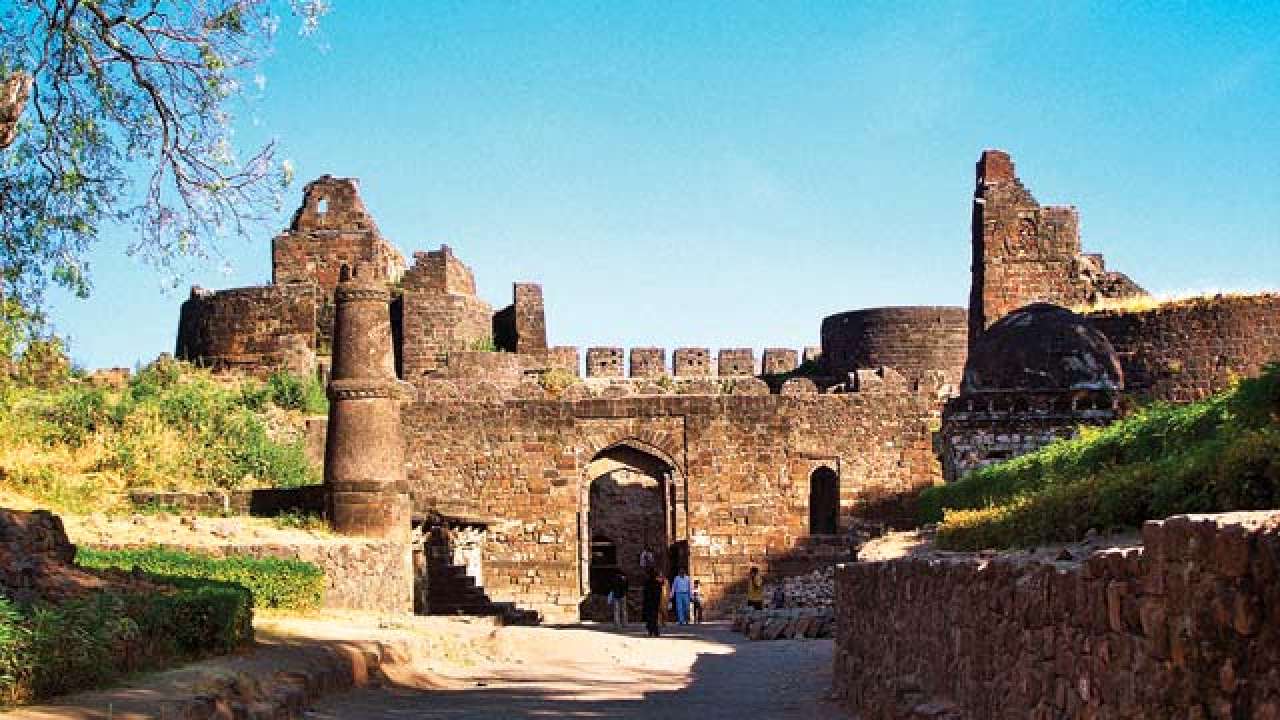
Those who come to wield power are extremely reluctant to step aside for someone else. Founders of dynasties wished to ensure perpetuity of their own reign through an unbroken chain of successors. But successors alone did not ensure continuity. What was needed additionally was a secure place from where to rule. This had to be a place that would radiate an aura of invincibility, permanence and grandeur. A fortified city and an imposing fort were needed to ensure a lasting presence.
In times of war, invading armies would lay siege to fortified cities and those who spent astronomical sums to create impregnable forts made provisions for such contingencies. These awe-inspiring structures, confined within lofty and intimidating walls, were stocked with grains, water and other necessities, not only for the king and the royal family, but also for the nobles and all those who lived within the fortified city — retainers, hangers-on, guards, soldiers, traders, servants and residents of the city. Provisions had to be made for fodder not only for the horses, camels and elephants, but also for draught animals, donkeys, mules and bullocks, and for cattle, goats, sheep and birds, whose meat would be consumed during a siege.
One of the most well-defended forts from all aspects was the impregnable fort of Daulatabad. Located a mere 15 km from Aurangabad and ascribed to the Yadav King Bhilan in 1187, it was then known as Deogiri. It is to Deogiri that Mohammad Bin Tughlaq shifted his capital from Dehli in 1328, renaming it Daulatabad — the abode of plenty.
The Daulatabad Fort is located on a 200-metre high rocky hill, carved to create this stupendous fort. It is defended by three concentric circles of fortifications with bastions, beginning with a moat and 50-feet-high sloping walls or glacis, to discourage anyone trying to scale the fort. This outer defence was followed by a succession of gateways and courts; entry from one courtyard to the other was through gates defended by bastions, the one above the first gate pierced with openings for placing three canons. The first gate was also studded with massive spikes to discourage an assault by elephants. The succession of doors leading to the courtyards were placed not opposite each other but diagonally across the courtyards, exposing intruders to a hail of arrows and gunfire from bastions as they tried to scamper across the courtyards.
The second series of defences included a gate, far narrower than the one before, with guard rooms on each flank. It is here that you come across some of the ruins of the palaces of the Tughlaqs and later additions, places, mosques and a beautiful minar known as the Chand Minar, built by Sultan Ahmad-Shah Bahmani in 1447.
The third defence is much further up the hill and the climb begins to grow steeper, this was the most difficult passage for any intruding army, filled with blind alleys opening through dark, meandering tunnels suddenly opening into narrow courts where a hail of arrows from three sides met the enemy. There was also a vaulted passage, leading to narrow blind alleys with openings in the roof from where intruders could be ambushed; trap doors and a passage that could be filled with smoke to blind and choke, plunging narrow and uneven stairs, open to ambush from above, lead to a narrow causeway.
It is from here that Aurangzeb launched his successful campaigns to conquer the Adilshahi and Qutub Shahi rulers of Golconda and Bijapur.
It is interesting to note that this impregnable fort changed hands 10 times, from the Yadavas to the Khiljis, to Malik Kafur, since the defeated king Ramchandradeva who had become a vassal of the Khiljis asserted his independence, back to the Khiljis, then the Tughlaqs, Bahmani Kings, Nizam Shahis of Ahmedabad, Mughals, Marathas the Nizams of Hyderabad and finally the Archaeological Survey of India.
The defences of the fort were never tested, almost every time there was a siege, someone from inside the fort, mostly someone from the ruling elite, panicked or was persuaded and the doors were opened. This shows, you can’t rule without keeping everyone on your side, one disgruntled third cousin and your grand edifice comes crashing down.
The author is a historian, and organises the Delhi Heritage Walk for children and adults